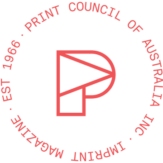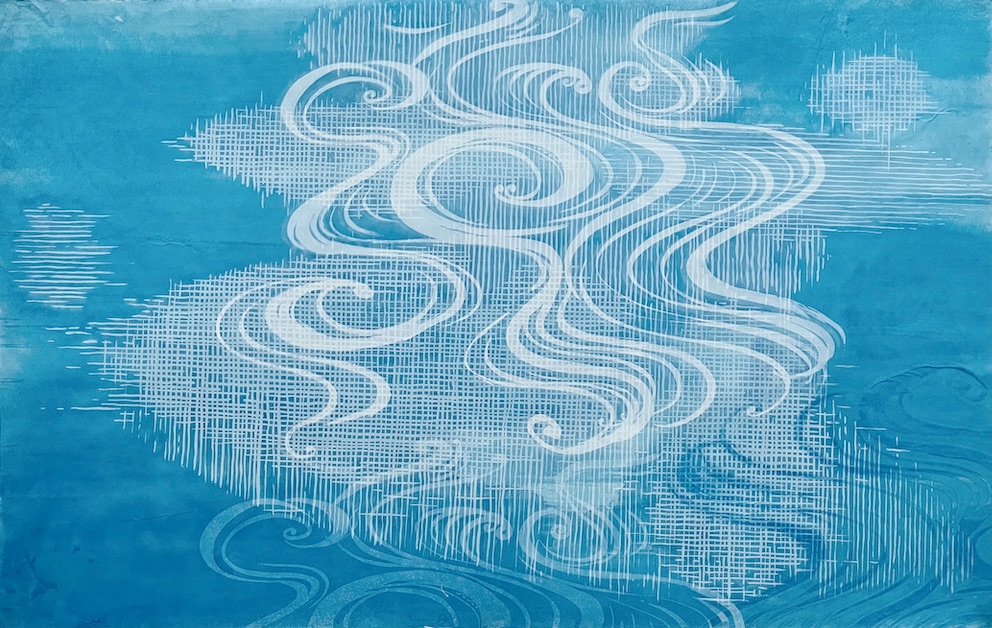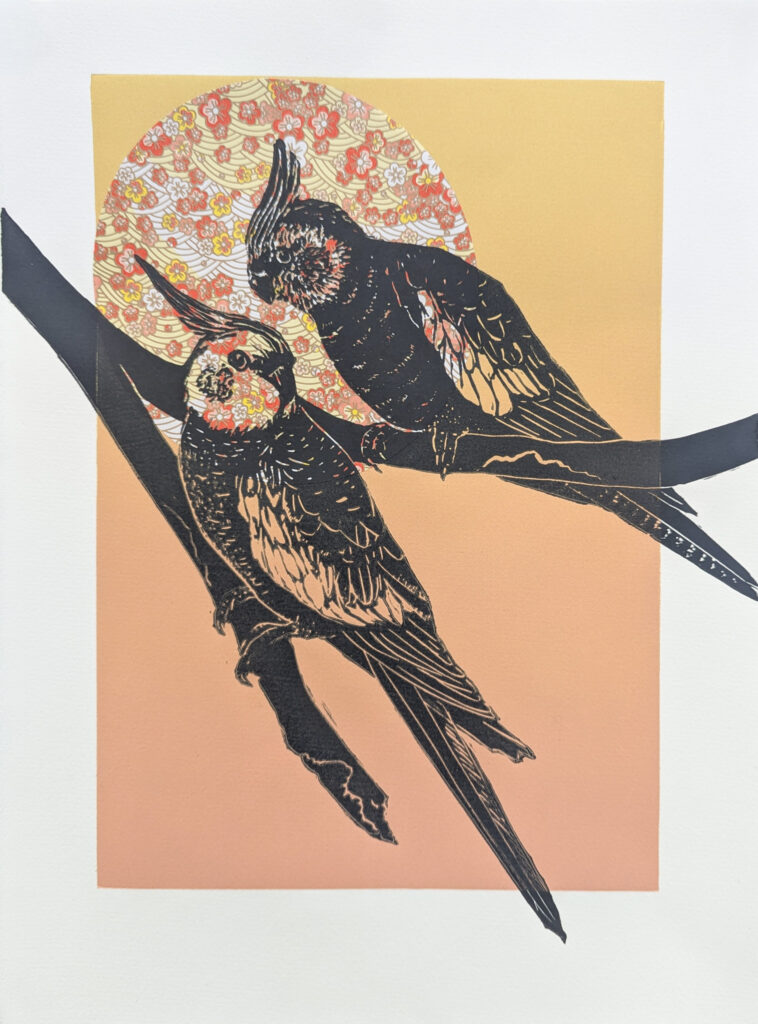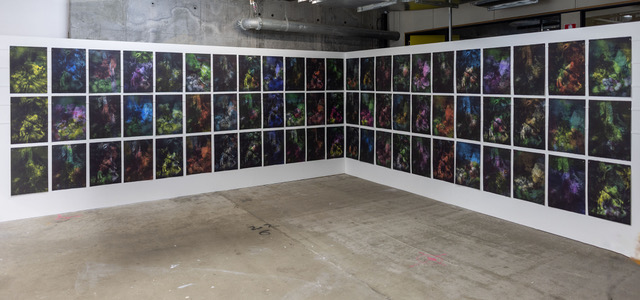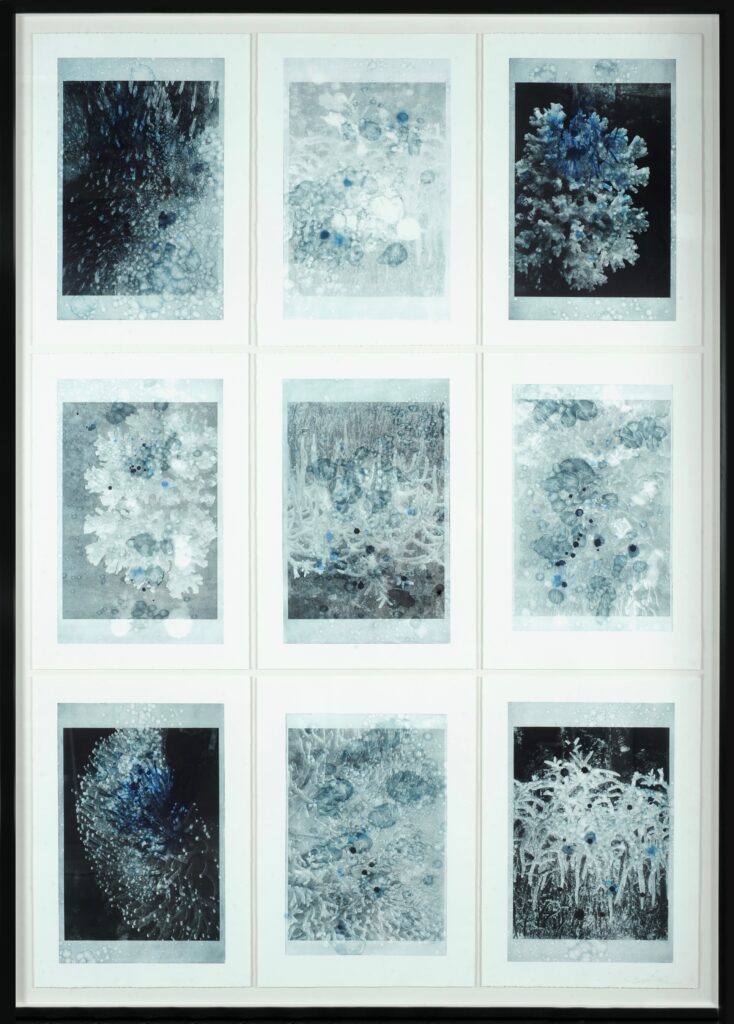Top:
Therese Kenyon, Swirling Water under Clouds, 2023, ink, wash and screen-printed motif over 3 panels of Japanese kozo paper. 63 x 300 cm
Below:
Therese Kenyon, Mountains and Cherry blossom II, 2023, watercolour, screen print and pochoir, 60 x 40cm U/S. Courtesy of Upspace Gallery.
Anthea Boesenberg, Remembered Sky iii, 2023 relief collagraph, hand printed on Korean kozo, 120 x 77 cm
Anthea Boesenberg, Remembered Sky iv, 2024, relief collagraph, hand printed on Korean kozo, 120 x 77 cm
Anthea Boesenberg, Rain ii, 2024, relief collagraph with wax resist on Korean kozo, 28 x 34 cm
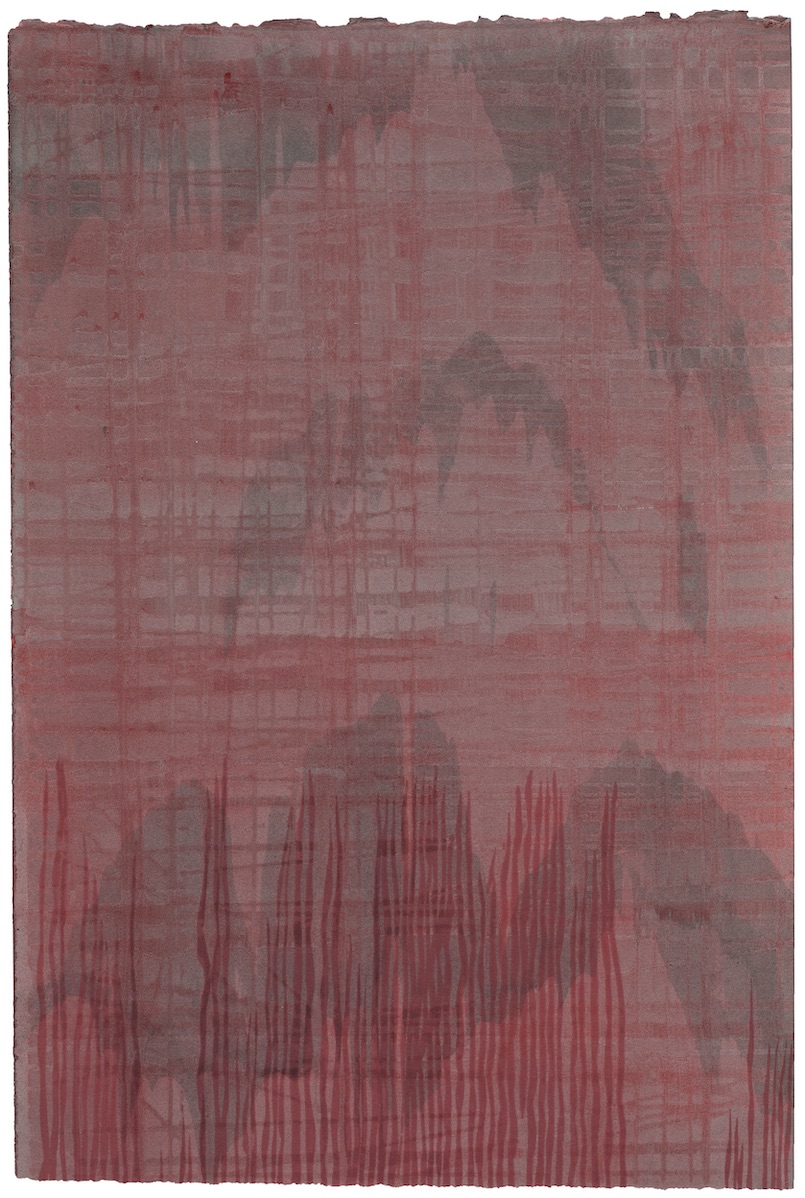


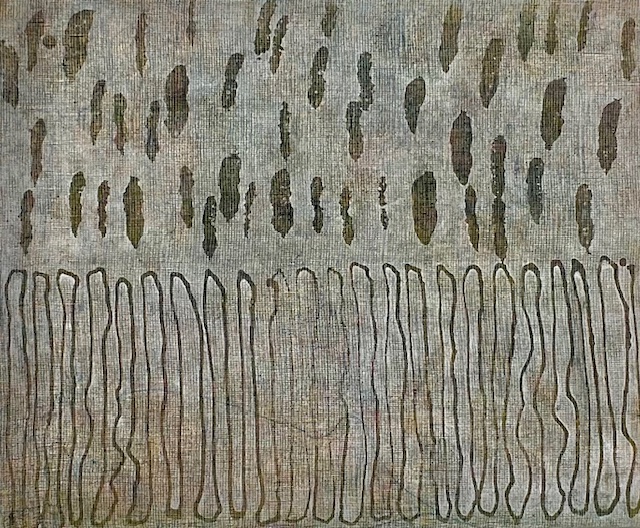
Anthea Boesenberg and Therese Kenyon share a depth of experience using their inherent knowledge and analysis of process, initially learned through printmaking. Both artists have had a role in developing and promoting print practice in NSW. Anthea was one of the founding members of Warringah Printmakers and Therese was co-founder of the Newcastle Printmakers Workshop. Both are members of the Sydney Printmakers, and both have taught and exhibited in this field for many years.
They renewed their friendship at Kandos in 2022 in a group exhibition that encouraged and celebrated the emergence of the hybrid print. (‘Way Out with Print’ curated by Linda Swinfield at Kandos NSW.) Through serendipitous accidents and alchemical processes, both artists have worked their materials to make imagery that could be described as ‘poetic abstraction’.
For this exhibition, Anthea has made wall installations, pushing the ability of Korean paper to accept oil-based pigments, as well as take pressure, in the relief printing process. In this series Remembered Skies 1-5, Anthea makes pairs of works, alluding to a duality concerning memory, retaining positivity, and beauty. These works are richly textured and coloured, taking advantage of the warp and weft of tarlatan cloth as the gridded matrix. This collagraph plate is rolled with ink on the surface and then printed, revealing the variations in colour and the differences in intensity and value. It is impressed onto the delicate but strong paper. The resulting offset prints almost look pixelated but are looser, and grainier. They reward long looking, for their stillness.
The materials guide us and lead us onwards. I don’t know what I would do without the sensitivity of Asian papers. I love the feeling of flirting with the possibility of disaster.
[A Boesenberg from discussion with T Kenyon on 21 March 2024]
Both artists utilise the grid, as a means to objectify, but still refer to nature in an oblique way. Older methods of printmaking such as stamps, pochoir, papercut stencils and monotypes, create unique state works on paper. Drawing with wax, ink and brush or stencil knife retains the hand-made and the immediacy in these artists’ work.
The gridded lines in Therese’s work, reference ink stains on textiles where the warp and weft threads create an abstract drawing and can be read as ripples and/or clouds. She used photographic references to extract the essence of fluidity to make line drawings. Appreciating the interplay between narrative and abstraction, she has created art works using the action of water as agent and image maker.
Therese experienced two artist-in-residencies in Beijing in 2009 and again in 2011. This was a key influence on her subsequent work. The appreciation of Asian papers and mineral colours, led to her gouache line drawings with a Chinese wolf hair brush, on tracing film. These were exposed onto silk screens, thus creating a library of stencils with the ability to repeat ripples and flow imagery.
In her triptych Swirling water under clouds, she references a river design by the 17th century Japanese artist, Ogata Korin (1658-1716).
This almost hairlike design flattens the motion of water but retains a sense of movement when repeated as a decorative linear element. Exploring the water and waves designs of Kamisaka Sekka (1866-1942) within the Rimpa movement, led to my exploration of abstraction and ornamentation.
[Excerpt from T Kenyon artist’s journal 2024]
The emptying out of representational imagery enables the exploration of abstraction to almost limitless possibilities. These two artists bring their poetic responses to various environments and more broadly to senses of light, atmospherics, connectivity, and colour. The years of experience in multi-disciplinary studio practice have opened their work to a much broader means of expression through research, collaboration, making and regularly exhibiting new work.
As Robert Nickas wrote in his book about ‘New Elements in Abstract Painting’:
If a representational picture offers an image of how the world looks, then doesn’t it fall to abstraction to provide us with an image of how the world feels?
Abstraction can be thought of as the ‘filter’ through which the recognizable passes and is transformed.
Anthea Boesenberg and Therese Kenyon
—
The Poetics of Abstraction, works on paper, is at the Print Council of Australia Gallery, printcouncil.org.au, 19 April-10 May, opening reception Friday 19 April 5-7pm with Dr Sally Gray.
—
Join the PCA and become a member. You’ll get the fine-art quarterly print magazine Imprint, free promotion of your exhibitions, discounts on art materials and a range of other exclusive benefits.
